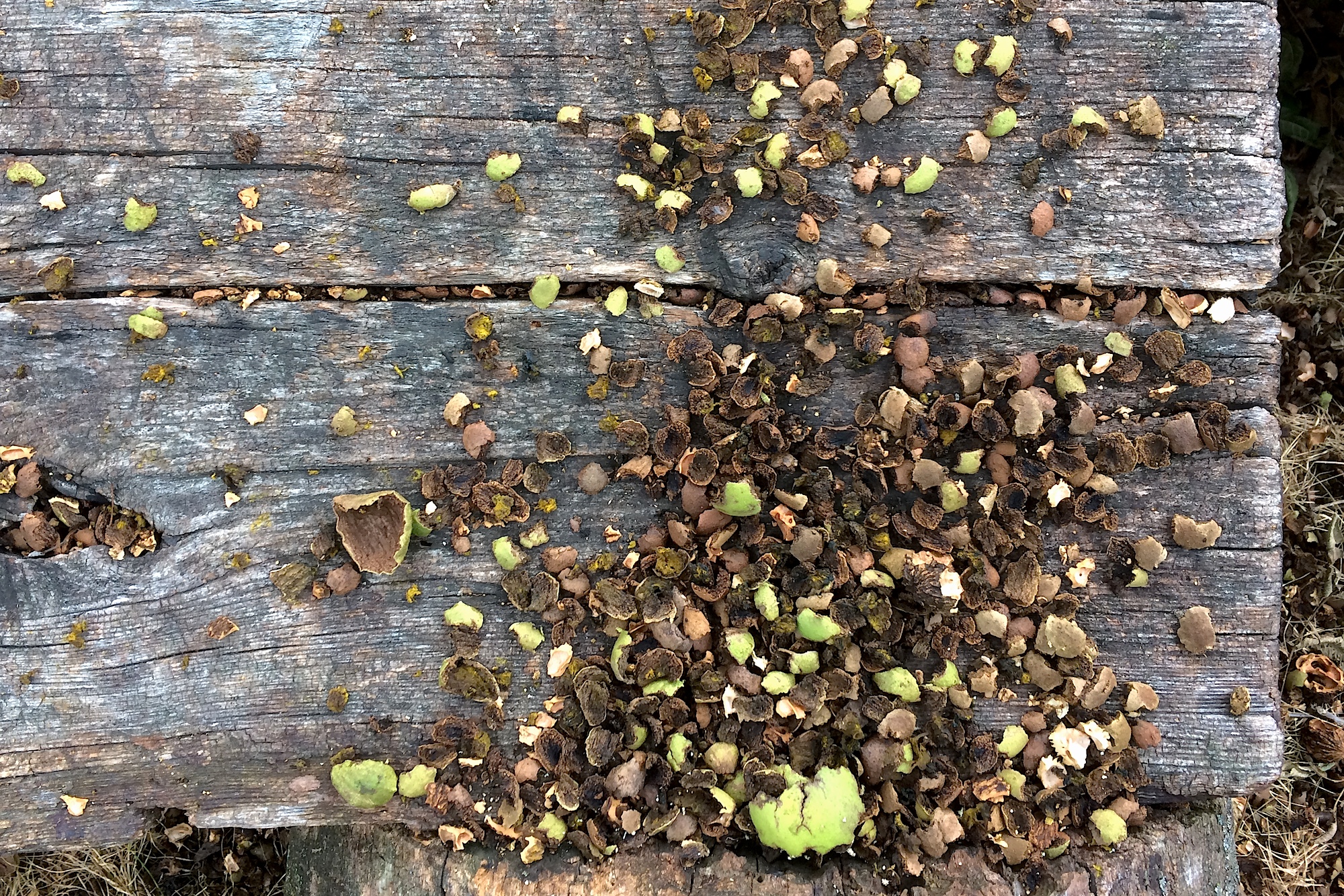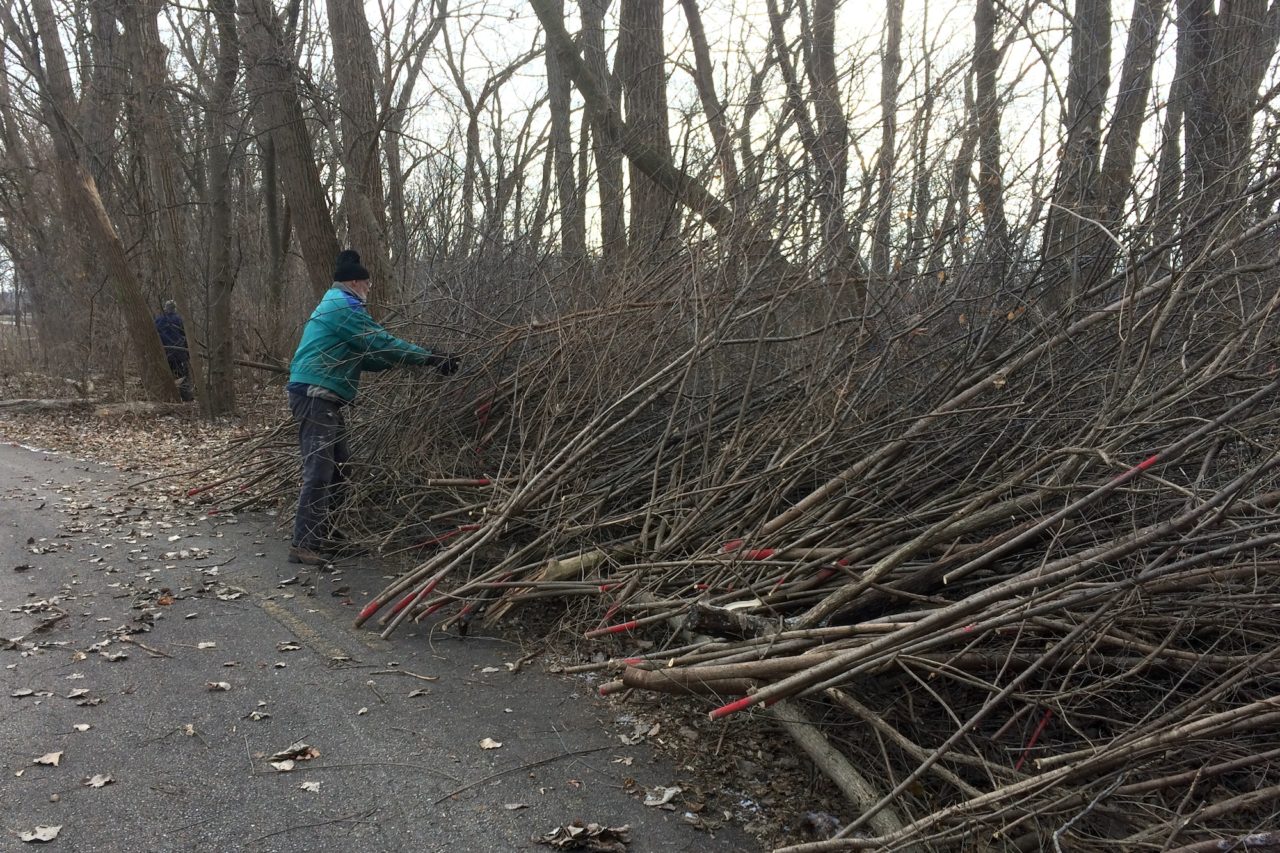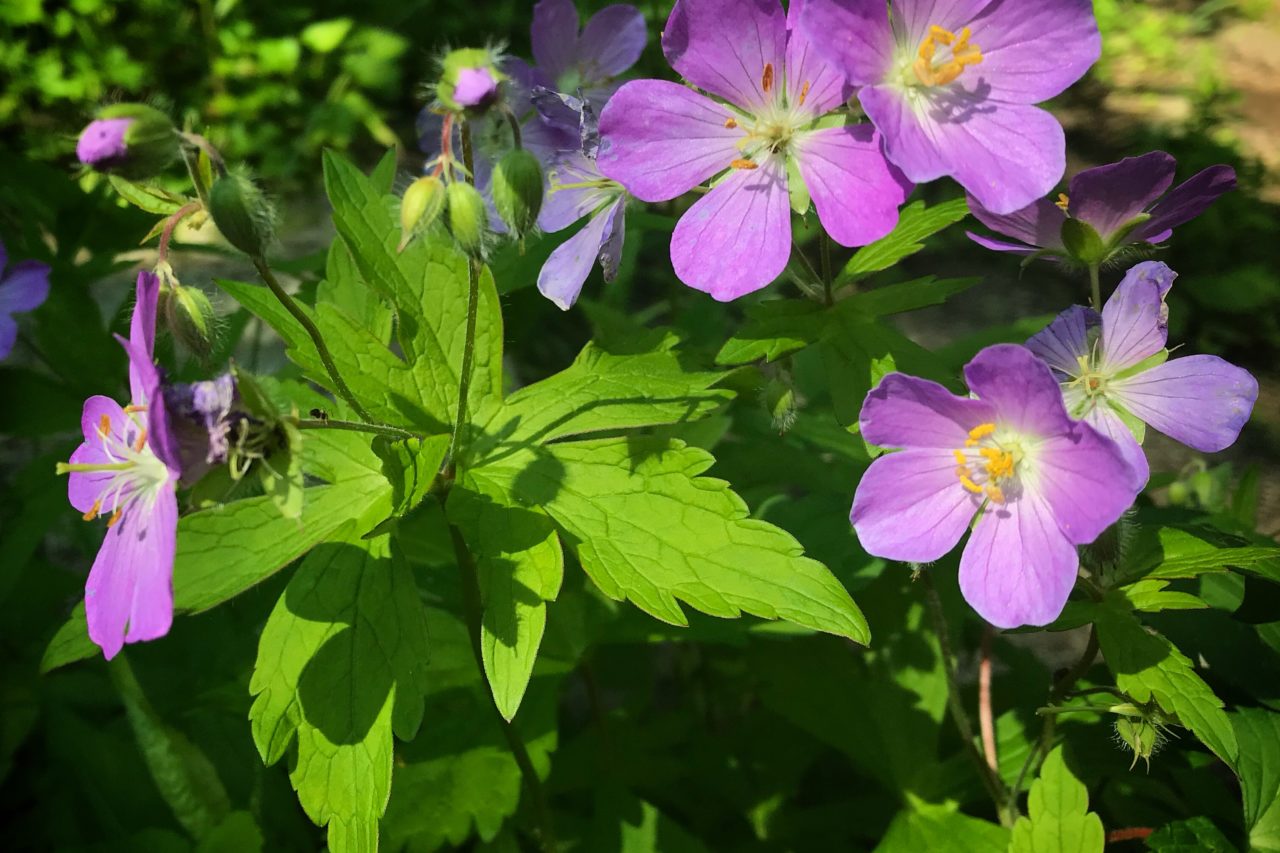If you’ve walked through the Ladd Arboretum recently, chances are you’ve noticed some deposits like this—and maybe the sound of chewing overhead. It seems to be a mast year for the black walnut tree in this area, and the squirrels have been taking advantage of the abundance. Squirrels are among the only animals with teeth strong enough to gnaw through the walnut’s tough shells—first removing the green outer husk—and they leave deposits like this under and near the tree (this was a bench near the Ecology Center this afternoon).
The black walnut (Juglans nigra) is native to Illinois and found, according to Swink & Wilhelm’s Plants of the Chicago Region, in “a variety of woodland habitats, including upland savannas and lower woods along stream terraces.” Squirrels help to spread walnuts, and several can be spotted along the channel banks where we are working. These native trees will be left alone as we clear the weedy and non-native trees around them.
It’s not only squirrels who feast on the black walnut. The tree is also a larval host for the hairstreak butterfly, according to the Morton Arboretum, and other sources point out that an abundance of caterpillars attracts warblers to these trees in the spring. Indirectly, raptors may benefit from abundant walnuts, too; we spotted a Cooper’s hawk diving for the feasting squirrels the other day.
— Wendy Pollock




